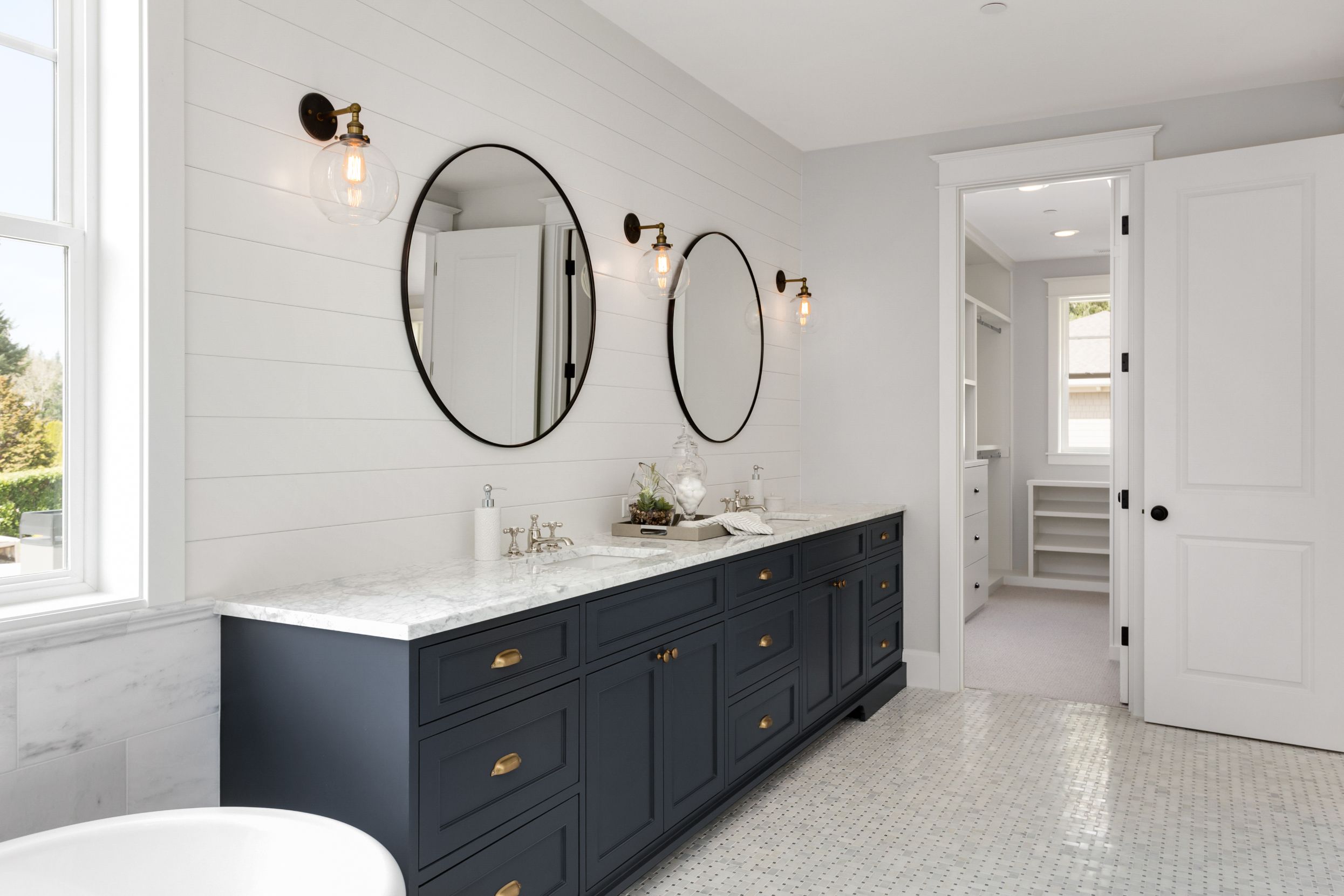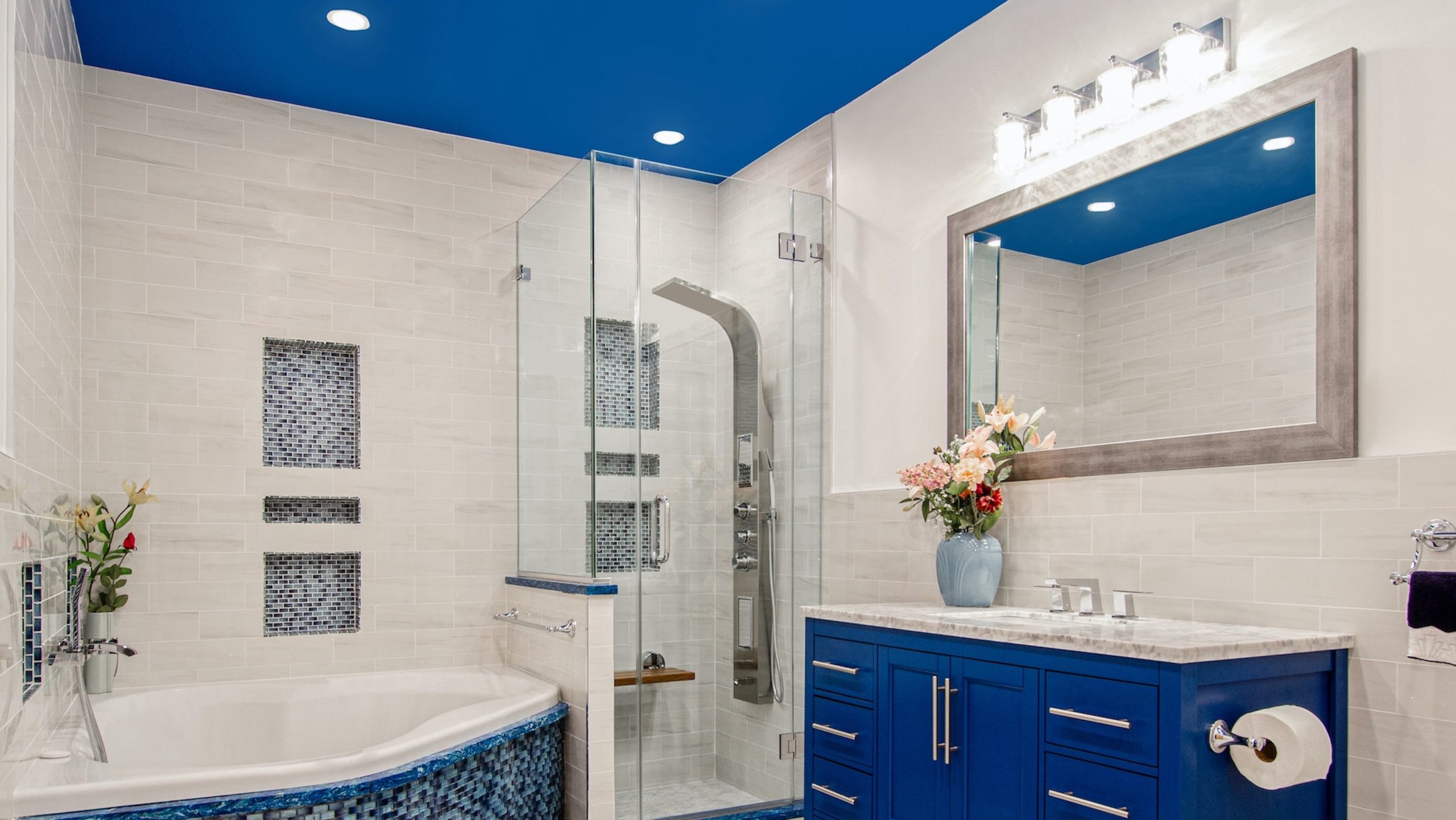Understanding Bathroom Ceiling Paint Needs: What Paint To Use On Bathroom Ceiling

Painting a bathroom ceiling presents unique challenges compared to other areas of your home. The high humidity, potential for mold growth, and frequent cleaning all contribute to the need for a specialized paint that can withstand these demanding conditions.
Choosing a Mildew-Resistant and Washable Paint
Selecting a paint that is both mildew-resistant and washable is crucial for maintaining a clean and healthy bathroom environment. Mildew-resistant paints contain additives that inhibit the growth of mold and mildew, preventing unsightly stains and potential health issues. Washable paints are easy to clean, allowing you to wipe away dirt, grime, and even mildew spores with a damp cloth.
Key Factors to Consider When Selecting Paint
- Color: The color of your bathroom ceiling paint can significantly impact the overall ambiance of the space. Light colors, such as white or pale blues, can make the room feel larger and brighter, while darker colors can create a more intimate atmosphere. Consider the size of your bathroom and the amount of natural light it receives when choosing a color.
- Finish: The finish of your paint refers to its sheen level. Flat paints provide a matte finish and are best for hiding imperfections, but they can be more difficult to clean. Eggshell paints offer a slightly more durable finish with a subtle sheen, while satin and semi-gloss paints are more durable and washable.
- VOC Content: Volatile organic compounds (VOCs) are chemicals released from paints and other products. High-VOC paints can emit strong odors and contribute to indoor air pollution. Look for paints labeled as low-VOC or zero-VOC to minimize their impact on your health and the environment.
Types of Bathroom Ceiling Paint

Choosing the right type of paint for your bathroom ceiling is crucial, as it needs to withstand moisture, humidity, and frequent cleaning. Here’s a breakdown of the most common types and their suitability for different bathroom environments.
Latex Paint
Latex paint is a popular choice for bathroom ceilings due to its water-based formula and ease of application. It dries quickly, cleans up easily with soap and water, and offers good adhesion to most surfaces.
- Advantages: Latex paint is known for its breathability, which allows moisture to escape, preventing mold and mildew growth. It’s also relatively low in VOCs (volatile organic compounds), making it a more eco-friendly option. Additionally, it’s easy to apply, dries quickly, and can be cleaned up with soap and water.
- Disadvantages: Latex paint may not be as durable as other options, especially in high-traffic areas or bathrooms with frequent steam exposure. It may also be susceptible to staining, especially if exposed to harsh chemicals.
- Suitability: Latex paint is a good choice for bathrooms with moderate moisture levels and infrequent steam exposure. It’s also a suitable option for areas with low traffic.
Acrylic Paint, What paint to use on bathroom ceiling
Acrylic paint is a type of latex paint that offers enhanced durability and moisture resistance. It forms a hard, durable finish that can withstand frequent cleaning and moisture exposure.
- Advantages: Acrylic paint is known for its superior moisture resistance, making it a suitable option for bathrooms with high humidity levels. It’s also mildew-resistant, making it a good choice for areas prone to mold growth. Additionally, acrylic paint is durable, easy to clean, and offers good adhesion.
- Disadvantages: Acrylic paint can be more expensive than latex paint, and it may not be as breathable as latex paint. This can potentially lead to moisture buildup and mold growth if not properly applied.
- Suitability: Acrylic paint is a good choice for bathrooms with high moisture levels, frequent steam exposure, and high traffic. It’s also a good option for areas where durability and moisture resistance are paramount.
Epoxy Paint
Epoxy paint is a two-part paint system that offers exceptional durability and moisture resistance. It forms a hard, non-porous surface that is highly resistant to chemicals, stains, and abrasion.
- Advantages: Epoxy paint is known for its exceptional durability and moisture resistance, making it ideal for bathrooms with high humidity levels and frequent steam exposure. It’s also resistant to chemicals, stains, and abrasion, making it a good choice for high-traffic areas.
- Disadvantages: Epoxy paint is more expensive than latex or acrylic paint and requires a more complex application process. It also has a strong odor and requires proper ventilation during application and drying.
- Suitability: Epoxy paint is a good choice for bathrooms with extreme moisture levels, frequent steam exposure, and high traffic. It’s also a suitable option for areas where durability and chemical resistance are essential.
Choosing the Right Finish

The finish of your bathroom ceiling paint plays a crucial role in its appearance, durability, and ease of cleaning. Different finishes have varying levels of sheen, affecting how light reflects off the surface, influencing the overall look of your bathroom.
Bathroom Ceiling Paint Finishes
Understanding the characteristics of each finish helps you choose the one that best suits your needs and aesthetic preferences.
- Matte: Matte finishes have a flat, non-reflective surface, ideal for hiding imperfections in the ceiling. They create a soft, subtle look, often preferred in bathrooms with limited natural light, as they absorb light rather than reflecting it. However, matte finishes are more prone to staining and are more difficult to clean.
- Satin: Satin finishes offer a slightly sheen finish, providing a soft, elegant look without being overly glossy. They are more durable than matte finishes and easier to clean, making them a popular choice for bathrooms. Satin finishes reflect light gently, adding a touch of brightness without being harsh.
- Semi-Gloss: Semi-gloss finishes have a noticeable sheen, making them more reflective than satin finishes. They are highly durable and easily washable, making them ideal for areas prone to moisture and frequent cleaning, such as bathrooms. Semi-gloss finishes can make a small bathroom feel larger by reflecting light and creating a sense of space.
- Gloss: Gloss finishes have the highest sheen, creating a highly reflective surface. They are the most durable and easiest to clean, making them suitable for high-traffic areas. However, gloss finishes can highlight imperfections in the ceiling and may make a small bathroom feel cramped due to their high reflectivity.
